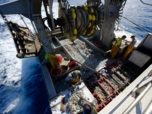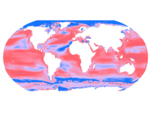How are fish doing in Europe?
During the French presidency of the European Union Council, Ifremer partners with the Fisheries, Seas and Coasts Department of the Institut Agro, the Flanders Research Institute for Agriculture, Fisheries and Food (ILVO), and the Irish Marine Institute to evaluate the status of fish populations in Europe in 2022.
Overfishing may be on the decline, but improvement is uneven from region to region and the European objective of 100% sustainable fishing by 2020 has not been reached. Furthermore, climate change is inevitably affecting fish: their distribution has changed, their food is scarcer and their growth is impaired. Climate change presents a number of challenges for resource management and preservation, which is why scientists are committed to finding solutions.




